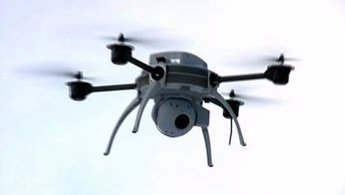
The Federal Aviation Administration released Sunday its long-awaited proposal for governing small commercial drones, setting a plan for remote-controlled aircraft to share the skies with passenger planes.
The FAA proposal would allow drones weighing up to 55 pounds to fly within sight of their remote pilots during daylight hours. The aircraft must stay below 500 feet in the air and fly less than 100 mph.
People flying drones would need to be at least 17-years-old, pass an aeronautics test, and be vetted by the Transportation Security Administration, but a certificate wouldn’t require the flight hours or medical rating of a private pilot’s license.
“We have tried to be flexible in writing these rules,” FAA Administrator Michael Huerta said. “We want to maintain today’s outstanding level of aviation safety without placing an undue regulatory burden on an emerging industry.”
The FAA asked for 60 days of public comment on its proposal for commercial drones, but industry experts expect the analysis of comments could take 18 months or longer before the rules are completed.
In another action Sunday, President Obama signed a presidential memorandum governing how federal agencies will use drones of all sizes.
The new FAA proposal doesn’t apply to hobbyists. The agency already issued a policy for recreational use, with rules calling for flying less than 400 feet high and within sight of the operator, while keeping clear of other aircraft and notifying air-traffic control when flying within 5 miles of an airport.
The small-drone crash Jan. 26 at the White House renewed focus on regulations. Though the incident is still under investigation, indications are it involved a recreational user losing control of the aircraft.
The certification requirement for commercial drones could be contentious. The Air Line Pilots Association, a union representing 50,000 commercial pilots, has urged that drone pilots be highly trained and monitored to prevent midair collisions.
The FAA proposal for commercial operators to keep their drones within sight means they can’t rely on on-board cameras to fly farther away. The proposal maintains the existing prohibition against reckless flight and it would bar an operator from dropping anything from the aircraft.
Source: usatoday.com
